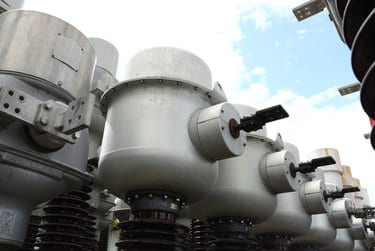South Australia stands at the forefront of the renewable energy transition, as we reported a few weeks ago and that we’re back with an update on today.
 For evidence of the change, look no further than how the state’s installed capacity of renewable generation consistently exceeds electricity demand. Residential rooftop solar will soon reach 28 per cent penetration, which is to say that more than a quarter of all households will have it.
For evidence of the change, look no further than how the state’s installed capacity of renewable generation consistently exceeds electricity demand. Residential rooftop solar will soon reach 28 per cent penetration, which is to say that more than a quarter of all households will have it.
And South Australia already has the most installed wind generation in the country, with 1,473 megawatts of onshore capacity representing 25 percent of the state’s total generation capacity (an additional 2,963 megawatts in wind projects are planned).
The state’s coal industry in the meantime is shrinking fast. In June, Alinta Energy announced that its sub-critical brown coal Flinders Operations (the Northern 554-megawatts and Playford B 240-megawatt power stations) and its Leigh Creek coal mine would cease operations beyond March 2018.
And then just this month Alinta moved the date up, saying Leigh Creek would close this November and that it would shutter Flinders by the end of March 2016.
South Australia will transition abruptly at that moment from sub-critical brown coal making up 13 percent of its coal-generation capacity to zero. While gas remains the dominant electricity-generation fuel source in the state (despite recent announcements that 719 megawatts of gas-fired generation are being withdrawn from the market), the state’s combined share of wind and solar photovoltaic energy will increase from 35 per cent of generation capacity to 48 per cent by April.
Given that solar and wind generation are expected to continue to grow significantly in South Australia—residential plus commercial solar installations in the state are forecast to almost triple over the next 10 years—there may soon come a time when synchronous generators will not operate during certain period of the year, or will be mothballed or even permanently decommissioned. That’s when South Australia’s electricity will be supplied primarily by renewable energy sources.

The Australian Energy Market Operator (AEMO) has concluded that it can work—that South Australia’s power system can operate securely and reliably with a high percentage of wind and solar PV generation as long as either the Heywood Interconnector to the state of Victoria is operational, and/or sufficient synchronous generation is connected and operating on the South Australian power system.
The advent of storage technology will further ease reliability and security concerns that have been raised. Indeed, such technology is already developing apace along three fronts in Australia:
- Integrated Solar Plus Battery Storage Systems (IPSS). Demand for IPSS will increase, driven by the retrofitting of existing solar PV installations and by the explosive growth of new installations. SA Power Networks (operator of a distribution network across South Australia) is already experiencing a “duck-curve” pattern in which midday power demand drops significantly because of all the electricity generated by rooftop solar and by material annual declines in demand. IPSS will help flatten the duck curve, moderating spikes in peak demand, and potentially eliminating many of them altogether.
- Large Scale Battery Storage: Network owner Powercor announced in August that next year it will install the largest battery in Australia—a 2-megawatt lithium-ion unit to be deployed on its regional grid near Ballarat in the state of Victoria. The battery will be used to reduce stress on the network on peak days, improve reliability, and reduce capital expenditures. We see this as the first of many large-scale battery storage installations that will be deployed across the grid.
- Utility Scale Solar Power Projects: U.S. company SolarReserve, which has considerable experience building solar facilities to scale, has shown interest in building a facility in South Australia. SolarReserve has a track record of note. It is about to complete construction of the world’s largest solar tower and storage plant, the110-megawatt Crescent Dunes solar tower power project in Tonopah, Nevada. And this past August the company received environmental approval from the Chilean government to develop the 260-megawatt Copiapó Solar Project. The project scheduled to begin commercial operation in 2019, is designed for “firm baseload power,” according to SolarReserve, and will operate “at a capacity factor and availability percentage equal to that of a coal-fired power plant.”
There is much to be see—and much to learn—in this remarkably rapid transition.
Source: IEEFA. Reproduced with permission.










